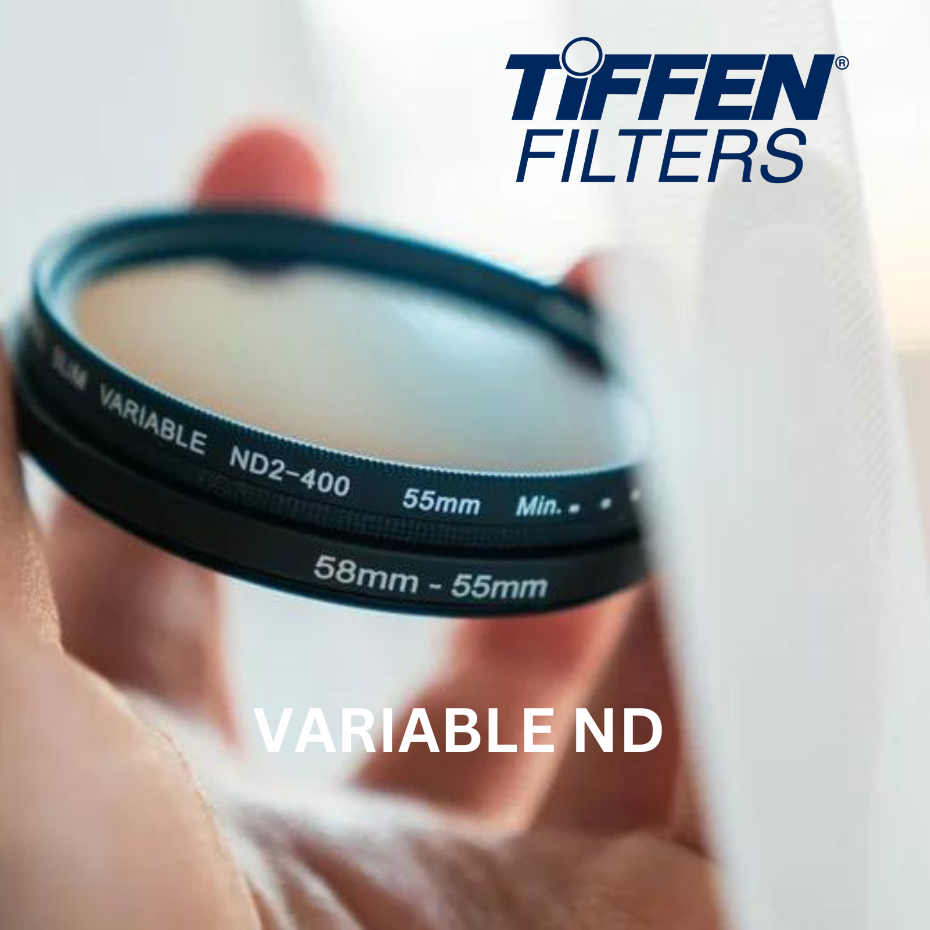 17.Jan.2024
17.Jan.2024
The Wonders of ND Filters in Photography
ND filters, short for Neutral Density filters, are a photographer's secret weapon when it comes to controlling exposure and capturing stunning images. These unassuming pieces of glass, or in some cases, resin, have the power to transform your photos in ways you never thought possible.
ND filters work by reducing the amount of light that enters your camera lens. This reduction allows you to use longer shutter speeds or wider apertures in bright conditions, enabling you to create beautiful effects like silky waterfalls, smooth cloud movements, and crisp portraits with a blurred background.
Understanding ND filter strength can seem daunting at first, with numbers like ND2, ND4, ND8, and more. However, it's quite simple. An ND2 filter reduces light by one stop, an ND4 by two stops, and so on. The higher the number, the more light is blocked.
A common scenario where ND filters shine is during daytime shooting. Bright sunlight can make it challenging to use your desired settings, but with an ND filter, you can maintain control over your exposure. Whether you're photographing a busy street scene, a field of flowers, or a sunny beach, ND filters allow you to achieve the right balance.
Photographers often use ND filters for long exposure shots. A long exposure can capture the passage of time, turning crashing waves into ethereal mist or traffic into colorful streaks of light. To achieve this, you'll need to set your camera on a tripod, attach an ND filter, and use a slow shutter speed. The results can be magical.
When it comes to choosing an ND filter, you'll need to consider your creative goals and the lighting conditions you're shooting in. Fixed ND filters have a set light reduction level, which provides consistency but limits flexibility. On the other hand, variable ND filters offer adjustable light reduction, making them versatile for a range of situations.
Using an ND filter is straightforward. Attach it to your camera lens, and be sure to set your camera to manual mode. Adjust your settings based on your composition and the desired effect. A lower ISO, small aperture, and slow shutter speed will often be necessary to balance the reduced light.
Experimentation is key with ND filters. Don't hesitate to try different filter strengths, shoot at various times of the day, and explore creative possibilities. By incorporating ND filters into your photography toolkit, you'll unlock a world of artistic potential and elevate your images to a new level.
In conclusion, ND filters are indispensable tools for photographers seeking to control exposure and capture breathtaking images. Whether you're shooting in bright daylight, creating long-exposure masterpieces, or experimenting with unique effects, ND filters open up a realm of creative possibilities. So, next time you're out with your camera, consider adding an ND filter to your gear bag and watch the magic happen.
ND filters work by reducing the amount of light that enters your camera lens. This reduction allows you to use longer shutter speeds or wider apertures in bright conditions, enabling you to create beautiful effects like silky waterfalls, smooth cloud movements, and crisp portraits with a blurred background.
Understanding ND filter strength can seem daunting at first, with numbers like ND2, ND4, ND8, and more. However, it's quite simple. An ND2 filter reduces light by one stop, an ND4 by two stops, and so on. The higher the number, the more light is blocked.
A common scenario where ND filters shine is during daytime shooting. Bright sunlight can make it challenging to use your desired settings, but with an ND filter, you can maintain control over your exposure. Whether you're photographing a busy street scene, a field of flowers, or a sunny beach, ND filters allow you to achieve the right balance.
Photographers often use ND filters for long exposure shots. A long exposure can capture the passage of time, turning crashing waves into ethereal mist or traffic into colorful streaks of light. To achieve this, you'll need to set your camera on a tripod, attach an ND filter, and use a slow shutter speed. The results can be magical.
When it comes to choosing an ND filter, you'll need to consider your creative goals and the lighting conditions you're shooting in. Fixed ND filters have a set light reduction level, which provides consistency but limits flexibility. On the other hand, variable ND filters offer adjustable light reduction, making them versatile for a range of situations.
Using an ND filter is straightforward. Attach it to your camera lens, and be sure to set your camera to manual mode. Adjust your settings based on your composition and the desired effect. A lower ISO, small aperture, and slow shutter speed will often be necessary to balance the reduced light.
Experimentation is key with ND filters. Don't hesitate to try different filter strengths, shoot at various times of the day, and explore creative possibilities. By incorporating ND filters into your photography toolkit, you'll unlock a world of artistic potential and elevate your images to a new level.
In conclusion, ND filters are indispensable tools for photographers seeking to control exposure and capture breathtaking images. Whether you're shooting in bright daylight, creating long-exposure masterpieces, or experimenting with unique effects, ND filters open up a realm of creative possibilities. So, next time you're out with your camera, consider adding an ND filter to your gear bag and watch the magic happen.





